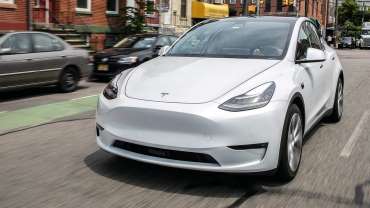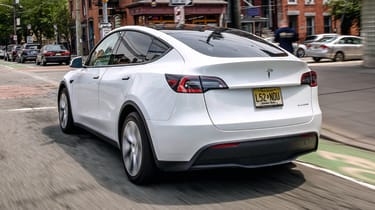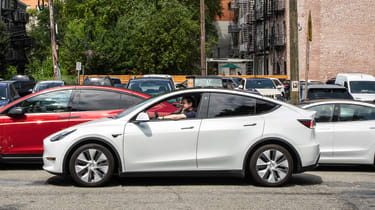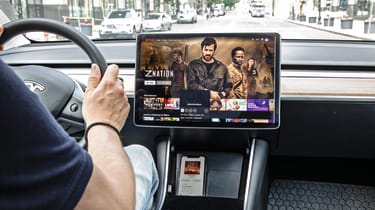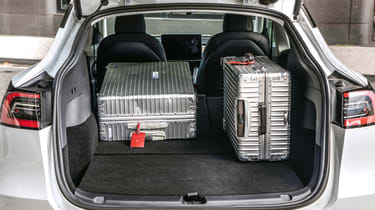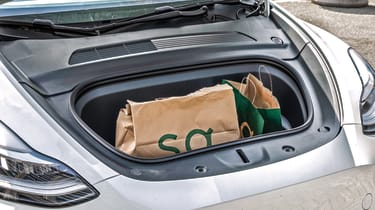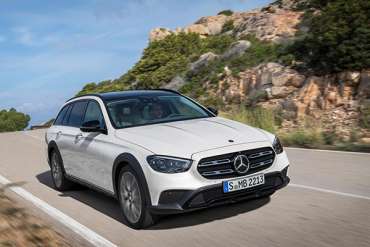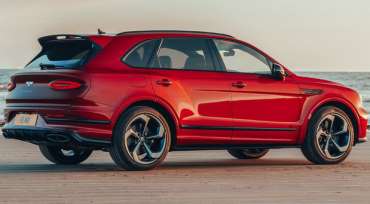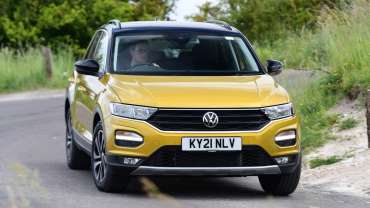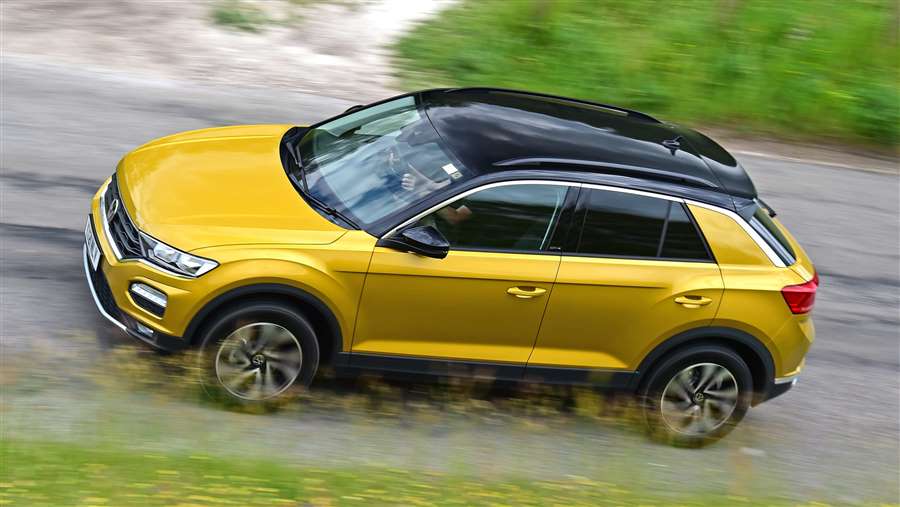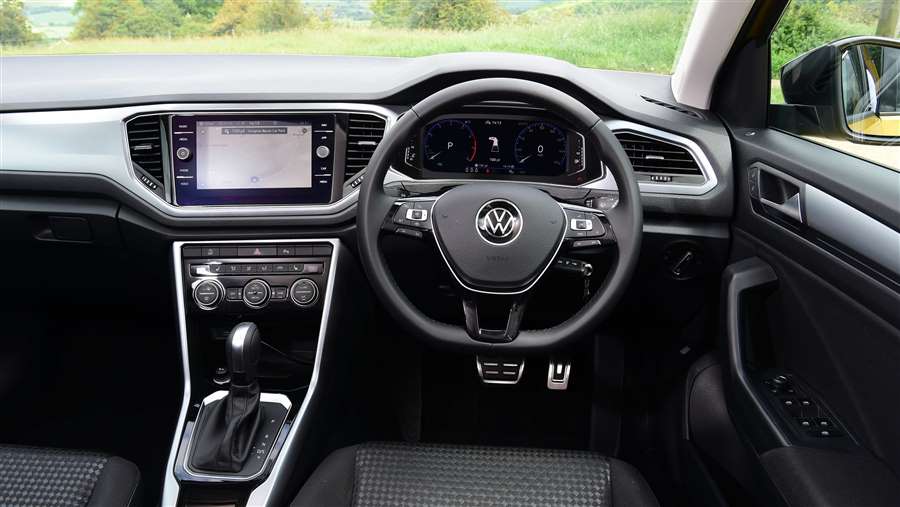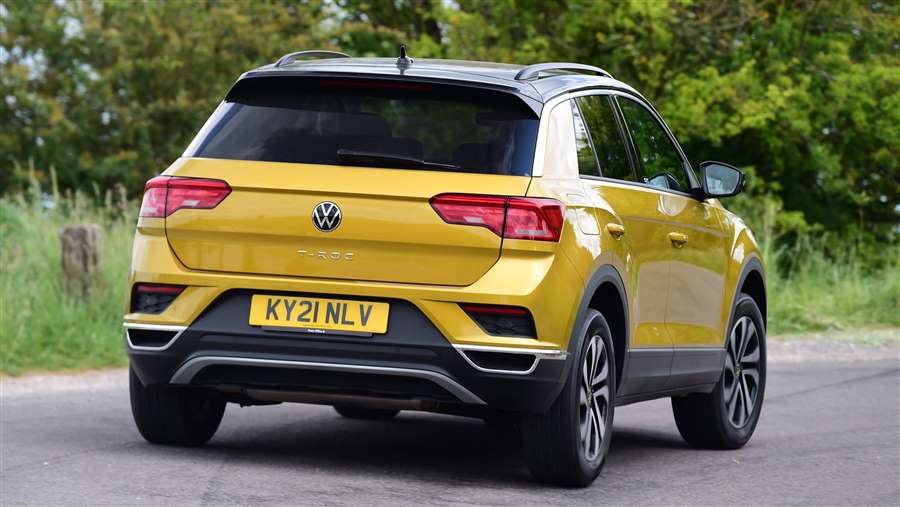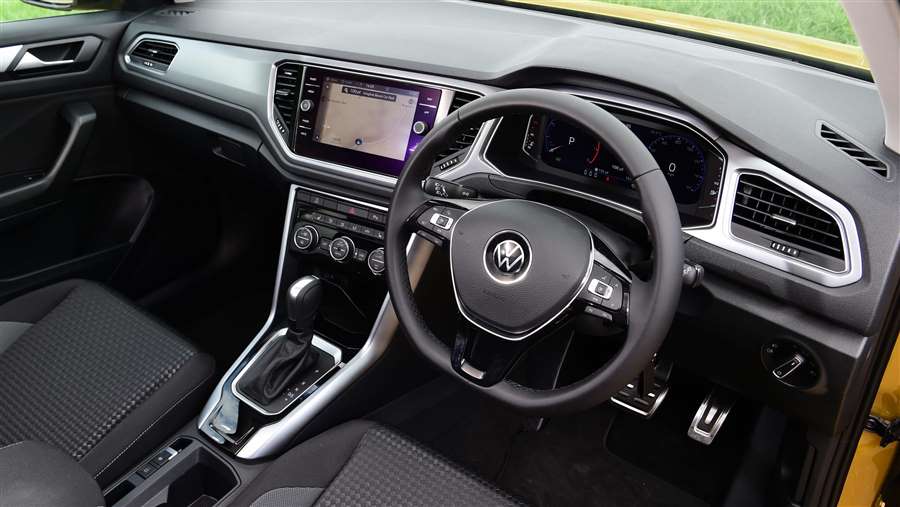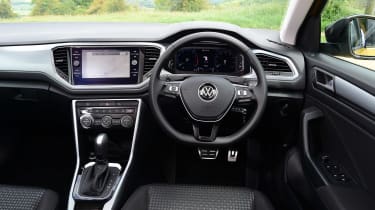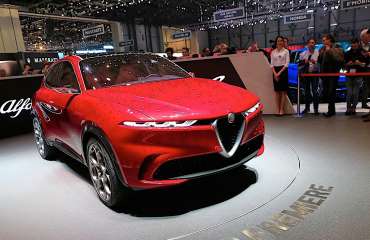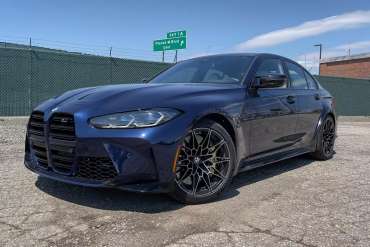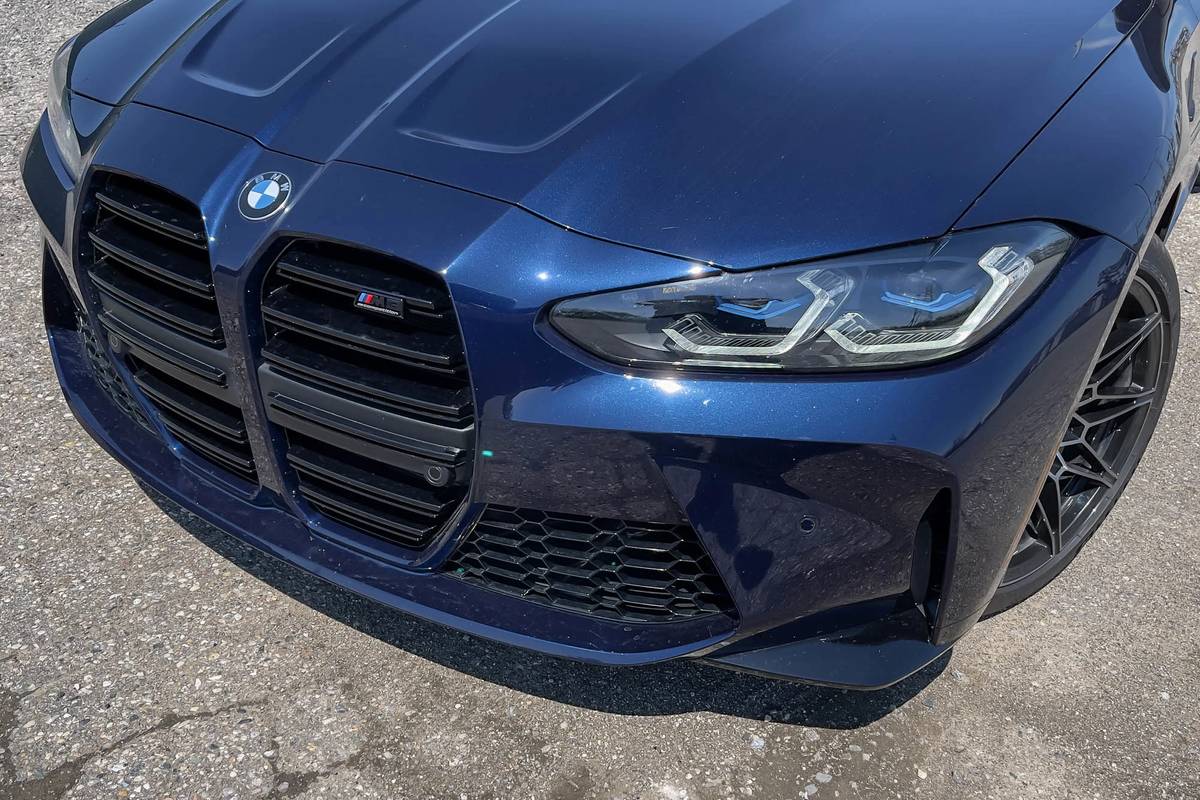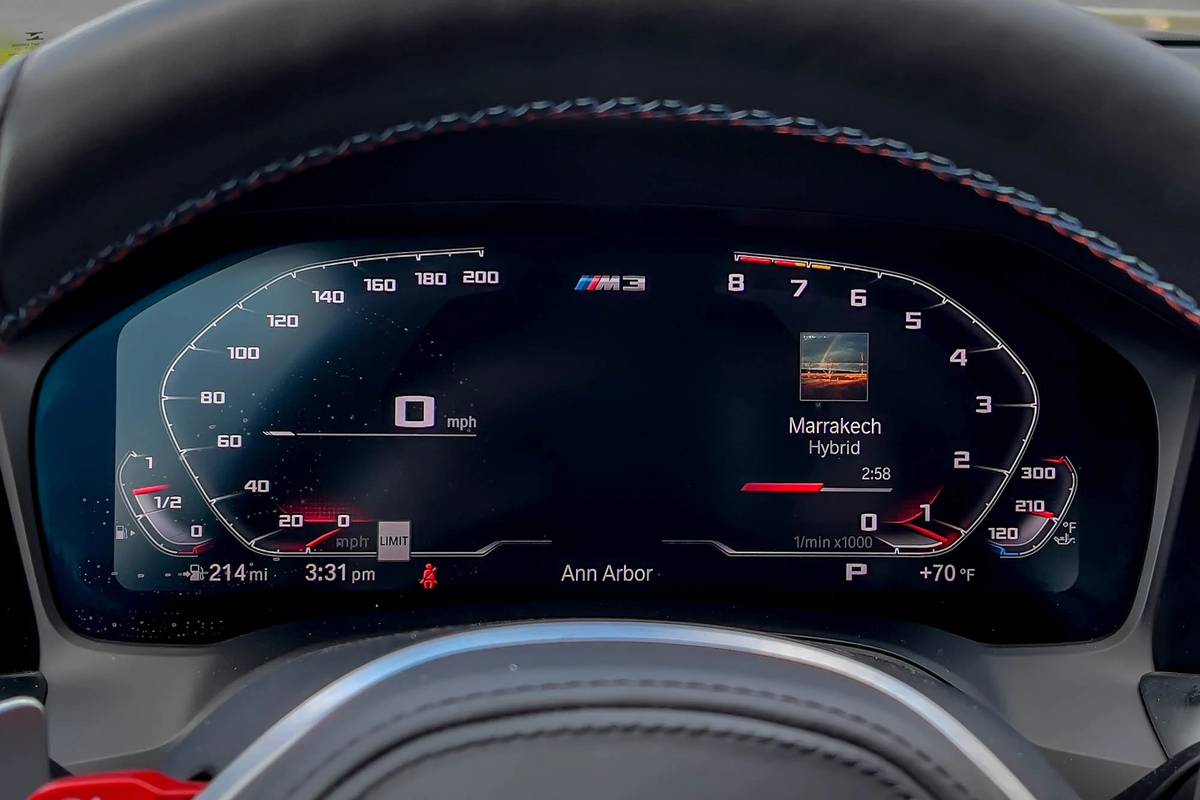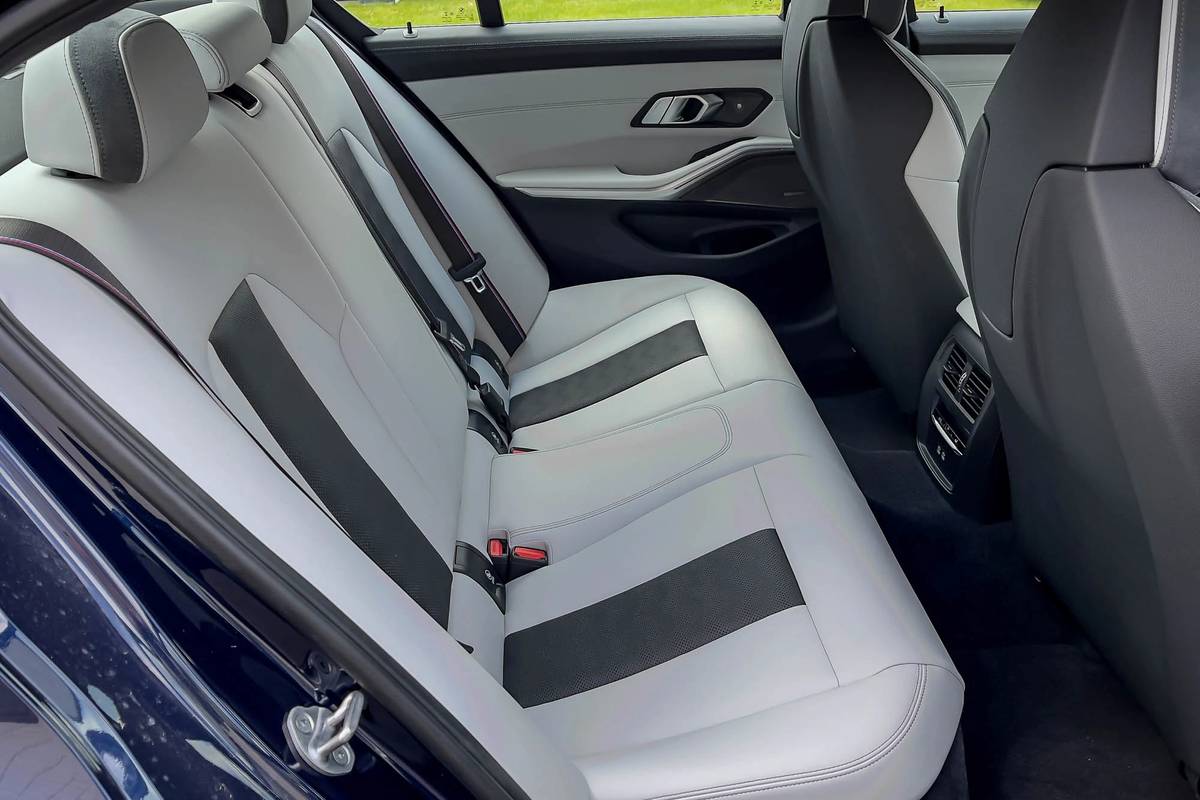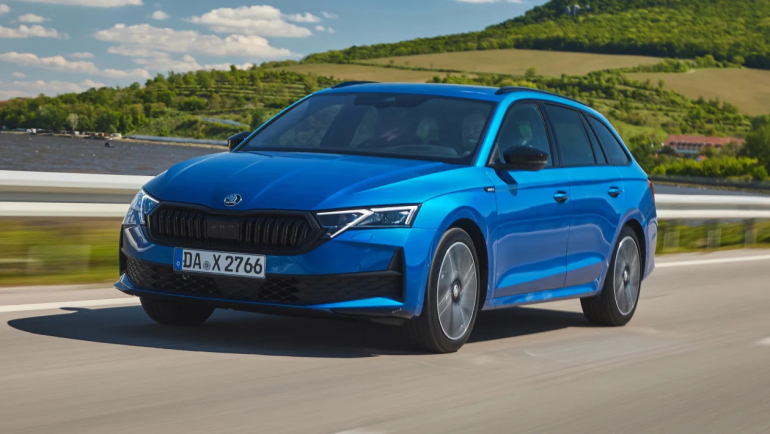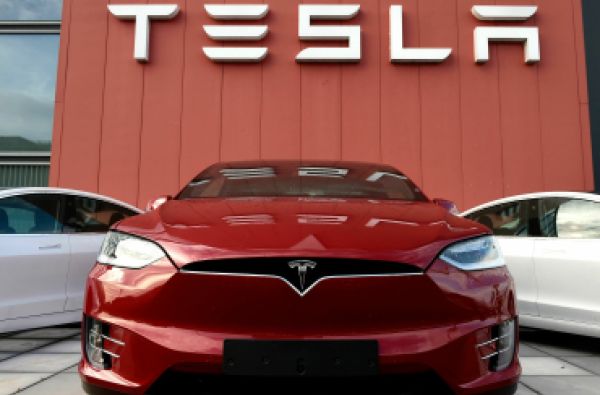The humble station wagon used to be the car for families as diverse as the Bradys, the Foremans, and probably the most famous, the Griswolds in National Lampoon’s Vacation. But wagons fell out of favor for high-riding and cavernous minivans in the ’80s and ’90s, which then gave way to SUVs and crossovers, but some stuck around, including this, the Mercedes-Benz E-Class All-Terrain. Looking at the beefy black cladding on the arches, you might call this a crossover, but it’s really an attempt at disguising the humble wagon in much the same way as Audi has the A6 allroad or Volvo has with the V90 Cross Country. Deception, it seems, is the key to saving the station wagon for future generations to enjoy.
With a price starting at a surprisingly reasonable $67,600, the E450 4MATIC All-Terrain Wagon – as it’s officially titled – is a high-riding wagon powered by a turbocharged 3.0-liter inline-six developing 362 horsepower and 369 lb-ft of torque before the EQ Boost mild hybrid assistance joins the fray. To fit in with its pseudo-SUV styling, all-wheel drive gives this wagon a penchant for dirt. However, from behind the wheel, it feels like a regular sedan, and with spacious seating for five, exceptional handling, and great fuel economy, this high-rider could be the best of both worlds in one exceptional package. Then, when you thought it couldn’t get any better, the E450 All-Terrain has two rear-facing jump seats to make this a seven-seater.
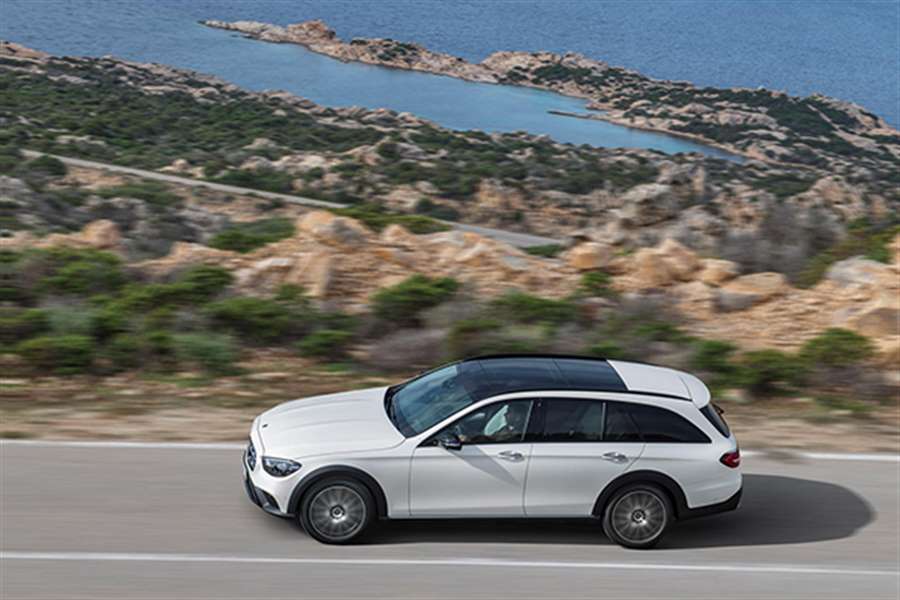
Changes: What’s the difference vs 2020 Mercedes-Benz E-Class All-Terrain?
Mercedes-Benz is dumping the entire E-Class Wagon range and only the All-Terrain and AMG E63 will be available going forward. Along with the rest of the E-Class range, the All-Terrain boasts a significant design upgrade both inside and outside for the 2022 model year. The old COMAND infotainment interface has been dropped in favor of Merc’s newer MBUX infotainment system inside the cabin, while under the hood, the old AMG-derived twin-turbo V6 has been replaced with Merc’s latest 3.0-liter turbocharged straight-six with mild-hybrid assistance.
Wagon Exterior
The All-Terrain is based on the Mercedes E-Class, which recently received a significant facelift. Merc essentially takes one updated wagon body, adds some skidplates, matte black body cladding, and a suspension lift to create an SUV-like design. This seems odd to us, considering the existence of the GLE, which is supposed to be the SUV version of the E-Class but, while we’re not sure the black body cladding looks great on this design language, we aren’t complaining about its existence.
The All-Terrain gets its own unique grille design and model-specific 19-inch alloy wheels wearing all-terrain tires to set it apart from the rest of the E-Class range. But it inherits a lot, like the LED headlights and twin exhaust outlets. There’s also a power tilt-and-slide sunroof as standard, but a panoramic version is available.
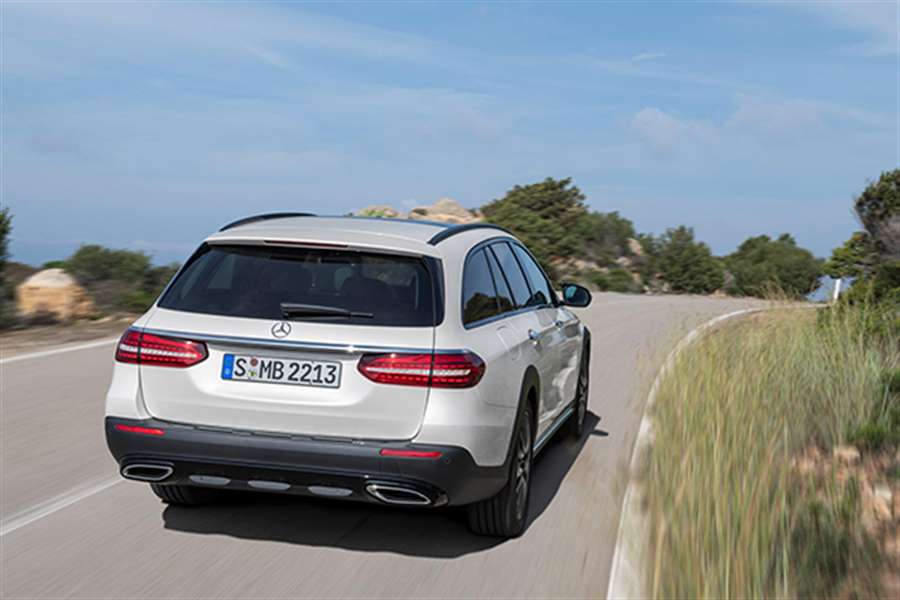
Dimensions
The E-Class All-Terrain is 194.8 inches long, which is slightly longer than the GLE’s 194.3-inch footprint. Its 115.7-inch wheelbase is shorter, however. Overall width is 81.3 inches and this raised wagon stands 58.9 inches tall. Considering its sizeable dimensions and mild-hybrid powertrain, a curb weight of 4,530 lbs is on the money for the segment.
Exterior Colors
Of the 11 available paint colors on offer, none of them are particularly vibrant. Sedate Black and Polar White are the standard no-cost choices, with several metallic hues making up the bulk of offering at $720 each. These include Obsidian Black, Graphite Grey, Mojave Silver, Lunar Blue, Cirrus Silver, and Selenite Grey. A few premium colors are available including the most flashy, designo Cardinal Red for $1,080, the subdued designo Diamond White for $1,515, or the matte-finish designo Selenite Grey Magno at $3,950.

Performance
The twin-turbo V6 out of the old wagon has been ditched in favor of the newer turbocharged six-cylinder engine with EQ Boost. This is Mercedes-Benz marketing lingo for mild-hybrid assistance. The new engine boasts the exact output figures as the old model but Mercedes claims it’s more efficient, however. And the EQ Boost feature provides an additional 21 hp and 184 lb-ft. The latter figure is the most important, as this car uses electricity to fill in the gaps when the engine isn’t providing its total torque output.
The German brand’s famous 4Matic all-wheel-drive system is standard fitment, which helps the All-Terrain post impressive acceleration figures. Mercedes claims an estimate of 5.1 seconds from 0 to 60, but this is a figure that seems conservative in our eyes and we wouldn’t be surprised to see quicker times recorded in the real world. Its top speed is limited to 130 mph.
But where the pseudo-SUV falls short is in its lack of a rated towing capacity. Mercedes doesn’t even sell it with a tow hitch stateside, so if you were contemplating trading in your GLE-Class for this, that might be a factor to consider.
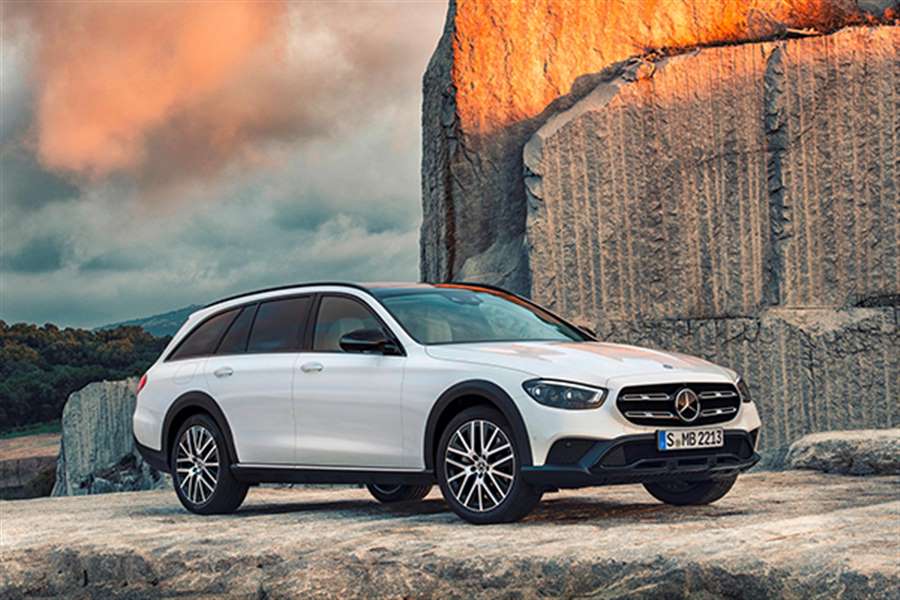
Engine and Transmission
The Mercedes E-Class All-Terrain is only available with a 3.0L turbocharged straight-six with a mild-hybrid assist. Mercedes calls the mild-hybrid assistance EQ Boost, and it’s a 48-volt system that provides up to 21 hp and 184 lb-ft of augmentation. Importantly, those figures are over and above the 362 hp and 369 lb-ft generated by the six-cylinder engine, but instead of being added to the top, they’re used as a torque-fill lower down in the rev range. The power is sent to a 4Matic AWD system via a 9-speed automatic transmission.
This new turbo I6 and 48-volt electrical system is the most Mercedes-like powertrain we’ve felt in a long time. It’s not as fast as the company’s V8s, which are stellar, don’t get us wrong, but this combo is the smoothest application of power, and by far the smoothest stop/start system we’ve tested in years. It kicks on smoother than anything other sub-six-figure machine that we can remember, and it will also coast to a stop with the engine off, even as you modulate the brakes.
Acceleration is buttery smooth across the rev range with the nine-speed automatic. We’ve talked about this before but the EQ Boost electric system can add 21 hp and 184 lb-ft of boost when you stomp on it. And from a stoplight, you’re going to want to step on it, to get ahead of all of those SUV and crossover people. It doesn’t have the performance of the AMG E63, but it’s not supposed to, and buyers in this segment don’t want that sort of world-ending performance under their right foot.
Handling and Driving Impressions
But it’s the handling department that wagons excel at compared to equivalent SUVs. Around expressway cloverleafs, or roundabouts, or any curvy county roads, the E450 feels as planted as a sports sedan. It stays mostly flat, especially in the sportier drive modes, and the long wheelbase makes high-speed maneuvers feel safe. Then there’s the standard air suspension, which is a crucial part of how this wagon feels.
Speaking of drive modes, the E 450 gets two off-road modes that both raise the vehicle higher than its standard 5.75 inches of clearance. The first one is for your average rutted roads, slippery roads and maybe driving on grass, which is always fun. Off-Road+ turns off the traction control and engages hill-descent control at speeds of up to 28 mph. We used the setting at a muddy piece of property and found it more than up to the task of navigating narrow two track roads and semi-deep, rocky trails.
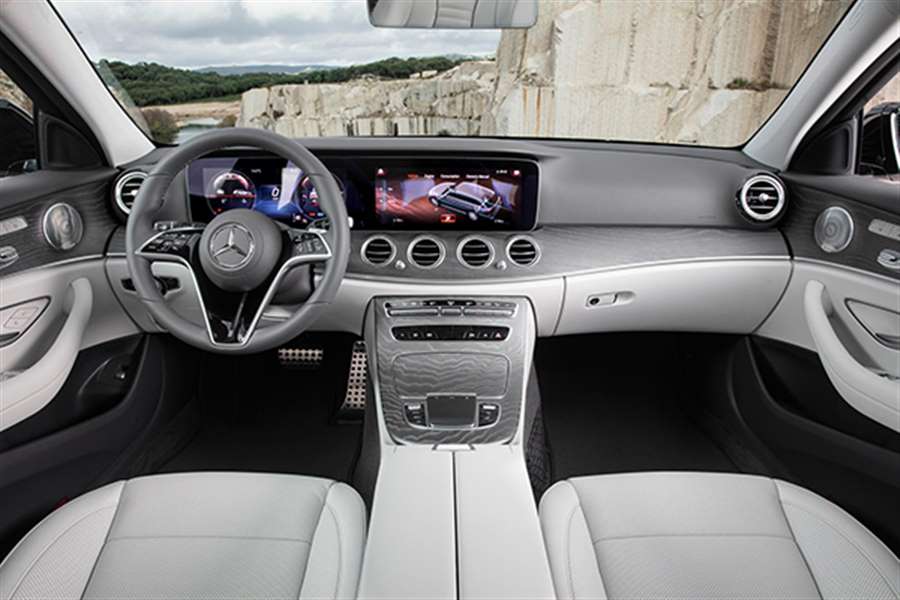
Our only complaint in this area is the 20-inch wheels equipped to our tester with 245/40-profile rubber. They have a very low profile and though the suspension sucks up most of the bounce from the road, there’s a harshness to the bumps that doesn’t feel great. At one point we barreled from an asphalt road to dirt with a decent dip at the edge. The E 450 banged, loudly enough that we had to get out and check the tires for a flat. Stick with the standard 19s, which come equipped with slightly higher-profile 245/45 all-season tires. Better yet, ask your dealer to hook you up with some tall 18s lying around, even though these aren’t technically an option.
Gas Mileage
According to the EPA, the E-Class All-Terrain claims gas mileage figures of 22/28/24 mpg city/highway/combined in the USA. It’s not what you’d call frugal, but it is an improvement over the old twin-turbo V6 and isn’t beaten by either the Audi A6 allroad or the Volvo V90 Cross Country, beating the former by 2 mpg and matching the latter on the combined cycle. A 21.1-gallon fuel tank is standard, which allows for a theoretical driving range of just more than 500 miles.
Interior
The All-Terrain gets the same interior as the recently revamped E-Class. As far as interior upgrades go, this one is pretty substantial. The restyle comes with new interior color options, an all-new steering wheel, and dual 12.3-inch displays. One display is mounted directly behind the steering wheel and serves as a digital instrument cluster. The second is neatly housed above a lovely curved piece of interior trim housing four air vents. This particular unit is a touchscreen interface and runs Mercedes’s latest MBUX software – perhaps the E-Class’s biggest upgrade.
Mercedes also removed some of the clutter found on the pre-facelift model. The only physical buttons are there to operate the climate control, which is a smart move. The touchpad is smaller than it was before and didn’t protrude as much. For the first time, it looks as if it were part of the overall interior design rather than an afterthought.
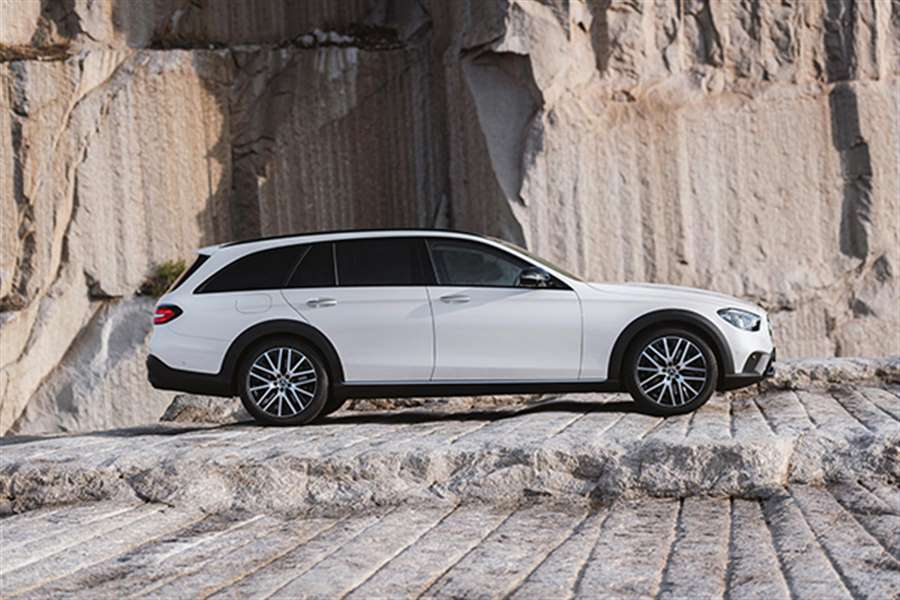
Seating and Interior Space
The E 450’s interior is classic Mercedes. The satin-finished wood and round air vents look amazing – as opposed to the brushed metal look and square vents on the E 63 sedan we recently drove which looked like an industrial vent factory. What’s less convincing is the steering wheel. It’s all-new for the facelift, and the tri-spoke design itself looks and feels great, but the piano black is a little cheap and will be a magnet for fingerprints.
As for the rest of the cabin and the seating, Mercedes has pulled off quite the trick in the fact that the E450 All-Terrain is a seven-seater, technically. That’s courtesy of a pair of rear-facing jump seats in the trunk that will seldom see use but are a nifty throwback to an era when wagons were popular family runabouts.
In the front of the cabin, the double sunroof is nice and the seats themselves are very comfortable – particularly the multicontour seats equipped to our tester with massage functionality. Front occupants get 37.5 inches of headroom, 41.7 inches of legroom, and 57.8 inches of shoulder room, which is a little tighter than the Volvo V90, but not by much. In the back, the E450 has 38.2 inches of headroom and 36.1 inches of legroom, which is more than enough for most, and there’s enough shoulder room to fit three abreast on shorter journeys without complaints.
Those jumpseats we mentioned flip up from the floor when needed and have their own seatbelts. They’re small, so only suitable for small children, but they’d have fun back there, especially as they get to look out the rear windscreen.
Interior Colors and Materials
The E-Class is a sweet spot for Mercedes where a higher price tag justified the ability to offer a multitude of upholstery finishes – 13 of them, in fact. There are five no-cost options – various color combinations of Mercedes’ MB-Tex leatherette upholstery including Black, Black/Nut Brown, Black/Macchiato Beige, Neva Grey/Magma Grey, and Magma Grey/Macchiato Beige. Genuine leather costs an additional $1,620 and is available in the same combinations, except for Macchiato Beige/Magma Grey. Nappa leather upholstery retails for $2,990 and is available in Black, Black/Nut Brown, and Macchiato Beige/Magma Grey. For those who want the most luxurious option available, there is only one designo option available. Tack on the $4,900 designo Exclusive Nappa Leather Package and you get Macchiato Beige/Saddle Brown Exclusive Nappa leather, a topstitched Nappa leather dash, a Macchiato Beige headliner in faux suede, and designo floor mats.
As for trim inserts, there are six options. Only the designo Black Piano Lacquer adds anything to the price of the Mercedes-Benz E-Class All-Terrain as a $1,300 option. We’d stay away from it anyway because it highlights smudges so easily. Instead, the no-cost options of Natural Grain Black Ash wood, Brown Ash wood, Natural Grain Brown Ash wood, Burl Walnut, and Natural Grain Grey Ash Wood are much better suited to the atmosphere of the car.
Trunk and Cargo Space
The E-Class All-Terrain offers a class-leading 35 cubic feet of cargo capacity. It easily trumps the Volvo V90’s 25.5 cube trunk and the 30 cubes provided by the Audi A6 allroad. The rear seats fold forward and nearly flat, in which case the Mercedes has 64 cubic feet of space for stuff. The only thing the E 450 can’t do is tall cargo, which is where it falls short compared to the GLE-Class. That said, the cargo bay is far more practical than a GLE-Class Coupe, and with a lower load-in height, you’re less likely to scuff the rear bumper.
Inside the cabin, the door pockets are on the narrow side, but the glovebox is significant, as is the storage space underneath the armrest. Ahead of the infotainment touchpad, a flip-up lid reveals two cupholders and space for a phone or set of house keys, while in the rear, the center seatback folds forward revealing two more cupholders.
Infotainment and Features
Features
The E-Class All-Terrain Wagon boasts the same standard features as the revamped sedan. It boasts all-LED exterior lighting, a power tilt-and-slide glass sunroof, power-adjustable front seats with a memory function, dual-zone climate control, heated front seats, a fold-out rear-facing third-row, keyless go, power liftgate, an illuminated entry system, and 64-color interior ambient lighting. As with all Merc products, the options list is extensive, with items like tri-zone climate control, massaging front seats, seat ventilation, heated armrests, a head-up display, and even soft-close doors. The standard raft of assistance features includes attention assist, blind-spot assist, a rearview camera, rain-sensing wipers, advanced tire pressure monitoring, and Pre-Safe. Most of the advanced driver assists are only available as part of an optional package that gives you semi-autonomous capability and nearly every conceivable assist.
Infotainment
Like the rest of the new Mercedes lineup, the E450 gets two 12.3-inch screens next to each other, one for the driver cluster and one for the infotainment features. You can touch the infotainment screen, control it with the touchpad (though this doesn’t have a wrist rest to brace your hand, so it’s harder to use it while driving), use the steering wheel touchpad, or yell “Hey, Mercedes,” followed by instructions and/or questions.
Other functionality includes the regular AM/FM radio, HD Radio, Bluetooth, and twin USB-C ports, while Apple CarPlay and Android Auto are also included. You have to pay extra for SiriusXM, though. Navigation is standard, but from the options list, augmented video for this is available, which uses the front-facing camera and overlays directional arrows and street names onto the screen so you never miss a turn. The standard audio is nothing to write home about, but a 590-watt, 13-speaker Burmester system can be equipped. In-car Wi-Fi is also available, as is wireless device charging.
As far as actual interaction with the system goes, the screen works quickly and doesn’t get hung up. The voice control system in this particular vehicle never seemed to recognize my voice prompts, but we have had better success with it in other models. We’re hoping this was a one-time thing.
Problems and Reliability
For a premium brand, Mercedes-Benz seems to have an inexplicably high number of recalls annually, which is a little concerning. At the time of our review, the E-Class All-Terrain had no fewer than eight recalls to its name, ranging in severity from no rearview camera image and a faulty front seat adjustment switch to parking sensor malfunctions, inaccurate vehicle location, incorrect seat adjustment, and in more severe cases, loose side-impact crash sensors and improperly mounted rear headrests that could result in poor neck support in a crash.
Mercedes includes a four-year/50,000-mile basic warranty as standard.
Safety
While the IIHS is yet to review the Mercedes-Benz E-Class All-Terrain, it has evaluated the sedan, giving it top honors as a 2022 Top Safety Pick +. This rating only applies to models equipped with the optional Driver Assistance Package. The NHTSA has a review of the E-Class wagon on record, with an overall rating of five stars out of five.
Key Safety Features
Traditional safety features include seven airbags including a driver’s knee bag, but rear-seat safety can be bolstered by optional rear-seat side airbags. Other features include ABS, traction and stability control, a rearview camera, rain-sensing wipers, crosswind assist, active brake assist, and Merc’s Pre-Safe system, which prepares the car when it senses an impact. Unfortunately, the only modern driver assistance feature Mercedes includes as standard is blind-spot assist. Mercedes offers a Driver Assistance Package with 15 advanced features, but it adds $1,950 to the price. Considering there are cars that cost a third of the price that include these features as standard, this is a big letdown. Especially for a car that punts itself as a family crossover.
Verdict: Is the 2022 Mercedes-Benz E-Class All-Terrain a good car?
We love wagons, in almost any form, for all the reasons we’ve mentioned above. You get all the dynamic benefits of a sedan with the space of an SUV. And modern wagons just look cooler than crossovers, although the Brady’s Pontiac Satellite longroof was undeniably cool.
Mercedes no longer sells a regular version of the E-Class Wagon, with this crossover in its place to lure in buyers who might have set out in search of an SUV, and we think it’s a smart move. This particular wagon, with the buttery-smooth inline-six and EQ Boost, is plenty fast for anyone not looking to lay rubber around every corner, and the stop/start system is up there with the Porsche Panamera hybrid as one of the best we’ve ever experienced. It’s also about half the price of the AMG wagon, vastly more comfortable, and decently capable off-road. The interior strikes a fine balance of spaciousness, luxury, and practicality, and the driving dynamics are almost flawless. We wish Mercedes would include more standard driver assistance for the money though.
Personally, this writer isn’t a fan of the black body cladding, but it’s a necessity in a world obsessed with SUVs. Rivals like Volvo and Audi all have something similar, but the powertrain here is by far the best. Of course, rivals are cheaper and some are more spacious. We definitely think the 2022 Mercedes E-Class All-Terrain does enough to justify a lead in this segment, but we wouldn’t sign a deal without test driving the Volvo first.
What’s the Price of the 2022 Mercedes-Benz E-Class All-Terrain?
The price of the Mercedes-Benz E-Class All-Terrain starts at $67,600 for the E450 4Matic, excluding the destination charge of $1,050. This is some $40k cheaper than the only other wagon Mercedes sells – the AMG E63 Wagon – but that deficit can quickly be made up if you’re liberal with the options. So, in the best interest of good consumer reporting, we specced an E450 All-Terrain to the max, and it nearly reached six figures. Fully loaded, it carries an MSRP of $96,910 including destination – nearly 50% more than the base price.
2022 Mercedes-Benz E-Class All-Terrain Models
Only one 2022 Mercedes E-Class All-Terrain Wagon model is available, the E 450 4Matic. It’s powered by a turbocharged inline-six-cylinder with mild-hybrid assistance and power is sent to Merc’s 4Matic AWD system via a nine-speed automatic transmission.
Standard specification includes LED exterior lights, a power tailgate, power tilt-and-slide glass sunroof, 19-inch alloy wheels, dual-zone climate control, power-adjustable heated front seats with a memory function, and leatherette upholstery. The 12.3-inch touchscreen interface is Apple CarPlay and Android compatible and runs Merc’s new MBUX interface with voice commands. The standard safety specification consists of attention assist, blind-spot assist, a rearview camera, rain-sensing wipers, advanced tire pressure monitoring, and Pre-Safe.
Additional Packages
Merc’s options menu is a combination of packages and standalone options and is too long to mention in full here without sounding like a brochure. However, there are two key packages worth opting for. The Premium Package costs $2,300 and adds a six-month SiriusXM subscription, active parking assist, a surround-view camera system, rear cross-traffic assist, and a Burmester surround-sound system with 13 speakers. The Driver Assistance Package ($1,950) dynamic cruise control, active and evasive steering assist, lane keep and change assist, speed limit assist, congestion emergency braking, and active brake assist to name just a few. There are also a handful of worthwhile standalone items, and while we’d forego the $550 soft-close doors, the $1,320 massaging front seats are something special. We also like the idea of the $1,100 head-up display, $760 tri-zone climate control, $350 augmented reality navigation, and the $1,000 panoramic sunroof, although if we were spending lots of time off the beaten path, we’re not sure it’d do too well in the long term.
What Mercedes-Benz E-Class All-Terrain Station Wagon Should I Buy?
We love the AMG E63 S Wagon. It’s impossible not to. But at $112K, you don’t get double the utility for almost double the price of this E450. So this just makes so much sense. The paint colors are boring except for the Cardinal Red Metallic at $1,080 which gets our nod of approval. We’d stick to the standard 19-inch wheels but select the $900 Exterior Lighting Package for the intelligent LED lighting and adaptive high beam headlights. On the inside, we’d stick with a no-cost wood-look trim and choose one of the $1,620 leather upholstery options – not the $4,900 designo Nappa leather. Throw in massaging seats, a heated steering wheel, the Driver Assistance Package, Premium Package, and head-up display and you’re all-in on a great package deal for less than $80,000 including destination.
Comparisons
2022 Mercedes-Benz E-Class All-Terrain vs Audi A6 allroad
These two vehicles are remarkably similar, right down to the cylinder count and mild-hybrid assistance. The Audi only has 335 hp to play with, but its 0-60 mph time of 5.1 seconds matches the Mercedes claim. Mercedes wins the fuel efficiency battle though, 2 mpg more efficient across the board than the Audi, and we peg it as having the smoother powertrain, too.
It’s another win for the Mercedes when it comes to cargo capacity. It offers five cubic feet more room with the seats folded up, and it has a third row of seats in a pinch. Both have classy, comfortable interiors, but we think Audi pulls it off a little better, and it comes with more toys as standard, with more safety features and the likes of tri-zone climate control, a 360-degree camera, and a 16-speaker B&O sound system. Despite this, its pricing starts at $1,700 less. The Audi may represent better value in this regard, but the Merc makes the most sense to us from a practicality perspective, and the added fuel savings paired with more power – smoother power at that – sway us in favor of the E-Class, if only by a little.
2022 Mercedes-Benz E-Class All-Terrain vs Volvo V90 Cross Country
Volvo’s V90 Cross Country might just be the most handsome wagon out there, but looks alone can’t win this fight. In one crucial way, Volvo is superior. The Swedish brand always includes a lot of safety features as standard despite its base price being nearly $13,000 less than the Merc.
The Mercedes does make the V90 feel old, however. Volvo’s twincharged four-cylinder engines were impressive a few years ago, but not anymore. At just 316 hp combined, it’s 46 hp down on the Merc and is nowhere near as refined. Yet the Mercedes is still able to match the Volvo’s gas mileage.
We’re thankful Volvo started this whole minimalist interior trend, but the Sensus touchscreen system is also starting to show its age. No matter how well you know it, you still have to look down to do something as simple as changing the cabin’s temperature. The Merc’s tech is much newer and much easier to use, and dare we say it, its interior also feels fresher. The Volvo may be slightly more spacious, but it doesn’t have third-row seats, and the trunk is smaller than the Mercedes. We’ll always have a soft spot for Volvo wagons, and the V90 CC is exceptionally cool, but the 2022 E-Class All-Terrain is a superior car, even if you have to pay a fair bit more for that superiority. If you’re shopping on a budget, though, the V90 is exceptional value for money.
(mercedes-world.com)


